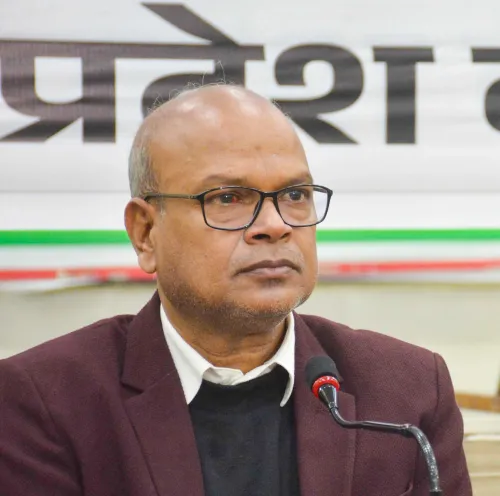Was the East India Company in Financial Crisis During Parliamentary Scrutiny?

Synopsis
Key Takeaways
- Intense parliamentary scrutiny of the East India Company revealed deep financial concerns.
- Debates focused on the legality of dividend payments amid rising debt.
- Accusations of mismanagement were met with defenses highlighting the Company's dual role.
- Critics emphasized the Company’s financial instability and reliance on state support.
- The discussions shaped the future of the Company's governance and control.
New Delhi, Nov 9 (NationPress) In the period preceding the renewal of its charter in 1813, the East India Company’s financial practices sparked heated and often divisive discussions in the House of Commons. MPs closely examined the Company’s financial reports, questioned its fundraising strategies, and contested the legality of its dividend distributions.
The discussions indicated a profound concern regarding the Company’s financial stability, its connection with the government, and the intricate interplay between its commercial activities and its status as a territorial authority. The crux of the debate centered around three linked topics: the issuance of dividends without evident profits, the mounting debt burden, and the unclear ties between commercial ventures and imperial costs.
The Dividend Dilemma: Legitimacy, Profits, and Debt
A key and recurring claim against the Company’s management was that they were distributing dividends to shareholders in blatant disregard of parliamentary statutes. MP Mr. Creevey, a notable critic, consistently raised this concern, arguing that foundational laws governing the Company, like those enacted by William III and Queen Anne, explicitly prohibited dividend payments unless derived from "net profits". He contended that the Company was devoid of such profits and was, in fact, "fifteen million worse than nothing".
According to Mr. Creevey and his allies, the Company had reverted to "old practices" and, when these proved inadequate, borrowed £1.5 million from the government under the pretense of supporting its trade, only to utilize those funds for a dividend payment of £630,000. Lord Folkestone bolstered this claim, asserting that the Company’s own records indicated a deficit exceeding seven million pounds after accounting for its capital stock, rendering dividend payments from "net proceeds" impossible.
Lord A. Hamilton expressed notable astonishment that the directors could find "no profits to pay the public," as mandated by law, yet seemed to have "ample funds to pay themselves".
Conversely, the Company’s supporters launched a vigorous defense, labeling these allegations as "unjust and baseless in both law and fact". Their argument hinged on a vital distinction between the Company’s dual roles as a commercial entity and a territorial sovereign. Mr. Adam, legal counsel for the Company, maintained that under the Act of 1793, the directors’ actions were "entirely lawful". He articulated what he termed the "grand fundamental principle": that the governance of India was conducted by a commercial entity, and it was the "right and responsibility of that commercial entity to have dividends disbursed from the profits of their commerce".
Supporters like Mr. Grant contended that critics erred in treating the Company like a private trader, neglecting its vast assets. He asserted that the "entire territorial property of the company, along with its assets and other properties," should be considered against its debts.
Additionally, he claimed that the Company’s future resources were on an upward trajectory, not a decline. Others argued that territorial expenditures naturally consumed a fraction of commercial profits, but the Company remained obligated to distribute its dividends, which ultimately benefitted public service. However, this defense failed to convince critics, who perceived the separation of accounts as a convenient fiction to obscure overall insolvency and bypass parliamentary statutes.
Debt, Revenue, and the Cost of Empire
Beyond the dividend debate, Parliament wrestled with the Company’s ever-growing debt. The "East India Company’s Bonds Bill" aimed to empower the Company to raise an additional £2 million based on its credit. This proposal faced immediate backlash. Critics pointed out the contradiction that while the Company’s revenues had surged from seven million to 15 million pounds, it lacked a surplus and its bond debt continued to escalate. They insisted on a clear and comprehensive overview of the Company’s financial situation before endorsing such a measure, with Mr. Creevey vowing to demonstrate that the company was "six million worse than nothing".
In defense, Mr. R. Dundas, President of the Board of Control, argued that the bill was not meant to inflate the Company’s overall debt but was merely shifting debt from India to England. This was framed as a sensible financial strategy to settle creditors in India, to whom the Company was paying interest rates of eight to ten percent, by borrowing in England at a lower rate of five percent. He further defended the Company’s financial position by highlighting several favorable developments:
- A recent surplus of £300,000 to £400,000, where a deficit had previously been anticipated.
- A decrease in the interest on the Indian debt from 8-10 percent to 6 percent, achieved under Lord Minto’s management, leading to an annual saving of £500,000.
- The fact that establishments in India had not been reduced due to ongoing military operations and disturbances, which primarily burdened the Company.
However, some members, including Sir H. Montgomery, remained skeptical, attributing the Company’s financial troubles to its own "extravagance, speculative trading, and inefficient fundraising methods". He cautioned that the directors would need to address 12 million pounds in bills within the year.
The Strain on the British Public
The financial discussions reached a peak when the broader relationship between the Company and the British government was scrutinized. Mr. Creevey contended that ever since its evolution from a trading body to a territorial sovereign in 1765, the Company had morphed into a "constant burden and grievance to the nation". He highlighted the 1793 agreement, which he depicted as a total failure for the public. The principal terms of that act had been overlooked:
- The Company was expected to contribute £500,000 annually to the public, but had only done so once in 19 years. Conversely, the public had been compelled to lend the Company £1.5 million.
- The external debt in India, which was to be reduced from eight to two million, had instead ballooned to 30 million.
- The bond debt had escalated from two to seven million pounds.
- A guarantee fund of £12 million, intended to protect the Company’s capital stock, had not received a single farthing.
Another long-time supporter of the Company, Mr. Charles Grant, defended the Company by asserting that the £500,000 annual contribution had been more than offset by the "various expenditures they had made on behalf of the government". However, this argument merely highlighted the critics’ point: the Company’s finances were inextricably intertwined with, and often subsidized by, the state, contrary to its charter obligations.
The financial practices of the East India Company, as unveiled in these parliamentary records, were characterized by a fundamental conflict between its commercial objectives and its imperial duties. While its proponents defended the legality and prudence of its actions within a complex and unprecedented framework, its detractors viewed it as a mismanaged entity, failing in its responsibilities, and surviving only through creative accounting and reliance on the financial support of the British public. These discussions ultimately influenced the context in which the Company’s charter was renewed, laying the groundwork for increased government oversight and the eventual erosion of its commercial monopoly.
Conclusion
This parliamentary examination served as the definitive public inquiry into the East India Company’s structural inconsistencies. The debate transcended a mere audit, representing a clash between the realities of expensive imperial governance and the stringent limitations of commercial law. The Company’s failure to align the soaring costs of its territorial sovereignty with the legal requirement to disburse dividends solely from 'net profits' revealed the inherent legal fictions and financial instability at the core of its hybrid model.
While defenders accurately pointed to the vastness of the Company’s assets and the expenses it incurred on behalf of the Crown, critics like Mr. Creevey successfully illustrated that the foundational promise of the 1793 Act—a profitable partnership for the British public—had collapsed, replaced instead by ongoing financial dependency. The need for parliamentary intervention to authorize further borrowing underscored the critics’ argument: the Company was solvent solely by the grace of the British government.
Ultimately, this rigorous scrutiny provided the political and legal justification for the state to intervene more decisively. The parliamentary inquiries of 1812 and 1813 did not result in the Company’s immediate dissolution, but they served as a conclusive verdict on its autonomy. By revealing the financial entanglements and the magnitude of its debt, the discussions paved the way for the greater assertion of parliamentary authority in the 1813 Charter Act, establishing a precedent for the eventual dismantling of the Company’s commercial monopoly and the gradual, inevitable shift from Company governance to direct Crown administration.
(The author is a researcher specializing in Indian History and contemporary geopolitical affairs)










